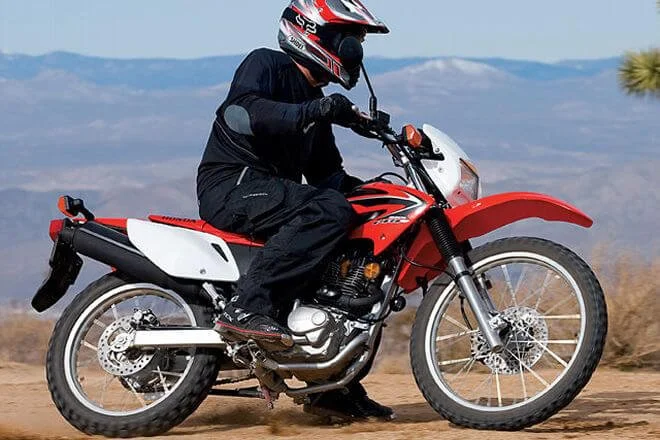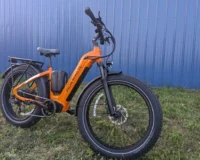🛣️ Street Legal Gas Dirt Bikes: What You Need to Know
If you’ve ever wanted to ride your dirt bike beyond the trail and onto public roads, you’ve probably wondered if you can make your gas dirt bike street legal. The short answer? Yes — but there’s more to it than just slapping on a license plate.
In this complete guide, we’ll cover everything you need to know about street legal gas dirt bikes — from legal requirements and essential modifications to registration, safety, and top models that perform well both on and off the road.
🚦 What Does “Street Legal” Mean for a Gas Dirt Bike?
In simple terms, a street legal gas dirt bike is a dirt bike that meets all the state and federal requirements to be ridden on public streets and highways.
Most standard dirt bikes are off-road only. They’re built light, powerful, and rugged, but they lack the necessary equipment for street safety and emissions compliance.
To be legal on the street, your gas dirt bike must conform to:
- Department of Transportation (DOT) safety standards
- Environmental Protection Agency (EPA) emissions standards
- State-specific vehicle registration laws
⚖️ Every state has slight variations — always double‑check local DMV regulations.
🧱 Why Make Your Gas Dirt Bike Street Legal?
Here’s why thousands of riders convert their dirt bikes to dual‑purpose or road‑approved versions:
- Flexibility: Ride on trails, then cruise the highway home.
- Convenience: No need for a truck or trailer.
- Freedom: Explore city streets, back roads, and off-road trails with one bike.
- Resale Value: Street-legal conversions often increase bike value.
- Adventure: Great for dual-sport riding and weekend expeditions.
A street legal gas dirt bike combines off-road capability with on-road practicality — the perfect hybrid for adventure lovers.
⚙️ The Basic Legal Requirements (Checklist)
Let’s go through the must-have components you’ll need to make your dirt bike legal on the road.
| Component | Description | Requirement |
|---|---|---|
| Headlight | Must have both high and low beam | DOT approved |
| Tail Light & Brake Light | Activated by front and rear brake | Required |
| Turn Signals | Front and rear indicators | Required in most states |
| Horn | Electrically operated | Required |
| Rearview Mirrors | At least one mirror (sometimes two) | Required |
| Speedometer / Odometer | Tracks speed and mileage | Strongly recommended |
| DOT Tires | Street-approved tread pattern | Required |
| License Plate Bracket & Light | Visible and illuminated | Required |
| Reflectors | Rear and side reflectors | Required |
| Muffler | With spark arrestor and low noise level | Required |
| Battery | For lighting and signaling | Required if not self-powered |
✅ Tip: Some aftermarket “street legal conversion kits” include most of these components in one package — easier and often cheaper than sourcing parts separately.
🏍️ The Conversion Process Explained
Converting your gas dirt bike into a street legal machine involves three main steps: modification, inspection, and registration.
🔧 1. Install Street Legal Equipment
Start by adding or upgrading all components in the checklist above. Use DOT-certified parts wherever possible.
Essential areas to address:
- Lighting system
- Electrical harness (for battery and switches)
- Mirrors and horn
- License plate mount
- Tires
You can either do this yourself or take it to a motorcycle shop that specializes in dual-sport conversions.
🧾 2. Get an Inspection (If Required)
Most states require a vehicle inspection at your DMV or a licensed inspection center. They check that:
- All safety components function properly
- Emissions and noise levels meet regulations
- VIN number is valid and clear
Bring your bill of sale or certificate of origin to prove ownership.
📜 Once approved, you’ll receive a form verifying your dirt bike meets street legal standards.
🏁 3. Register and Insure
After passing inspection:
- Take your documents to the DMV.
- Pay registration fees.
- Obtain your title and license plate.
- Attach the plate and plate light properly.
- Secure motorcycle liability insurance (required by law for street use).
Once completed — you now own a fully street legal gas dirt bike!
🧰 What Models Can Become Street Legal Easily?
Some dirt bikes are designed with dual-sport capabilities right out of the box. If you’re shopping for options that are already compliant or easy to convert, here are a few popular models:
| Model | Engine | Why It’s Suitable |
|---|---|---|
| KTM 450 EXC-F | 450cc | Designed as a dual-sport; already meets emissions standards |
| Honda CRF450L | 450cc | Street legal from factory, requires minimal approval |
| Yamaha WR250R | 250cc | Lightweight, reliable dual-sport balance |
| Suzuki DR-Z400SM | 398cc | Built for both street and trail with factory compliance |
| Beta 500 RR-S | 478cc | Fully homologated in many states |
🏆 If you haven’t bought a dirt bike yet, choosing a dual-sport model saves money and ensures compliance upfront.
🧱 Street Legal Gas Dirt Bike vs Off-Road Only Bike
Here’s a quick comparison to understand their core differences:
| Feature | Street Legal Gas Dirt Bike | Off-Road Dirt Bike |
|---|---|---|
| Lighting System | Full DOT-compliant lights | Minimal or none |
| Emissions System | Meets EPA standards | Off-road unrestricted |
| Suspension Setup | Tuned for both comfort and durability | Tuned for aggressive terrain |
| Tires | DOT-approved street tires | Knobby off-road tires |
| Noise Level | Quieter legal muffler | Louder exhaust |
| Speedometer & Horn | Required | Optional |
⚖️ State-by-State Variations
Even though federal laws guide overall safety and emissions, state laws differ widely.
For example:
- California: Very strict; only models with on-road EPA certification can be plated.
- Arizona, Nevada, and Utah: Friendlier dual-sport conversions.
- Texas: Allows off-road bikes to be made street legal if inspected successfully.
📞 Always confirm current regulations with your DMV before starting your conversion project.
🪛 Maintenance Tips for a Street Legal Gas Dirt Bike
Street legal bikes experience different wear patterns than off-road bikes.
Here’s how to keep yours in prime condition:
- Regular Oil Changes: After every 10–15 hours of mixed riding.
- Check Tire Pressure: Street tires need consistent PSI for stability.
- Chain Lubrication: After every 100–150 miles.
- Brake Fluid Check: Monthly or after long rides.
- Lighting Inspection: Ensure headlights, brake lights, and indicators work daily.
💡 Maintenance for street riding focuses more on lights, tires, and fluids — while off-road maintenance targets dust and dirt exposure.
(You can also read our Gas Dirt Bike Maintenance Guide for detailed engine care tips.)
🧱 Pros and Cons of Street Legal Gas Dirt Bikes
| Pros | Cons |
|---|---|
| Freedom to ride anywhere | Initial cost of conversion |
| Great for commuting & trail riding | Slightly heavier after conversion |
| Increased resale value | Stricter noise and emission regulations |
| Easy to insure and register | Slight performance loss off-road |
| Adds safety features | Requires routine inspection |
⚡ Overall, the pros far outweigh the cons if you enjoy both on-road and off-road adventures.
🧠 Common Misconceptions
Myth 1: “All dirt bikes can automatically become street legal.”
❌ Not true — some models lack emissions compliance or VIN approval.
2 Myth : “You only need mirrors and a headlight.”
❌ You must meet all DOT and state requirements (including signals and tires).
Myth 3: “Street legal bikes can’t handle off-road riding.”
✅ False — dual-sport models are built to handle both terrains effectively.
🏍️ Top Tips for Safe Riding on the Street
- Wear full protective gear — helmet, gloves, jacket, and boots.
- Be visible — wear reflective clothing and keep lights on.
- Stay within speed limits — your bike might handle differently on asphalt.
- Avoid rush hour traffic — dirt bikes are lightweight, making them less stable among larger vehicles.
- Maintain insurance and registration tags — penalties can be steep if your bike isn’t up to code.
🔗 Related Guides and Resources
- Gas Dirt Bike Guide
- Shop Gas Dirt Bikes
- Electric vs Gas Dirt Bike – Detailed Comparison
- Best 250cc Gas Dirt Bikes for Dual Sport Riding
🛣️ Final Thoughts: The Freedom of a Street Legal Gas Dirt Bike
Owning a street legal gas dirt bike opens a new world of adventure. You’re no longer limited to forest trails or MX tracks — you can conquer highways, side roads, and back trails all with one machine.
From choosing the right parts to staying compliant with state laws, making your dirt bike street legal takes effort but yields incredible reward.
When you follow the correct steps — proper lighting, tires, paperwork, and regular maintenance — your street legal bike becomes the go‑everywhere companion that never quits.
So, whether you convert your current gas dirt bike or buy one already compliant, remember:
Ride smart, stay safe, and enjoy the road and the dirt!







